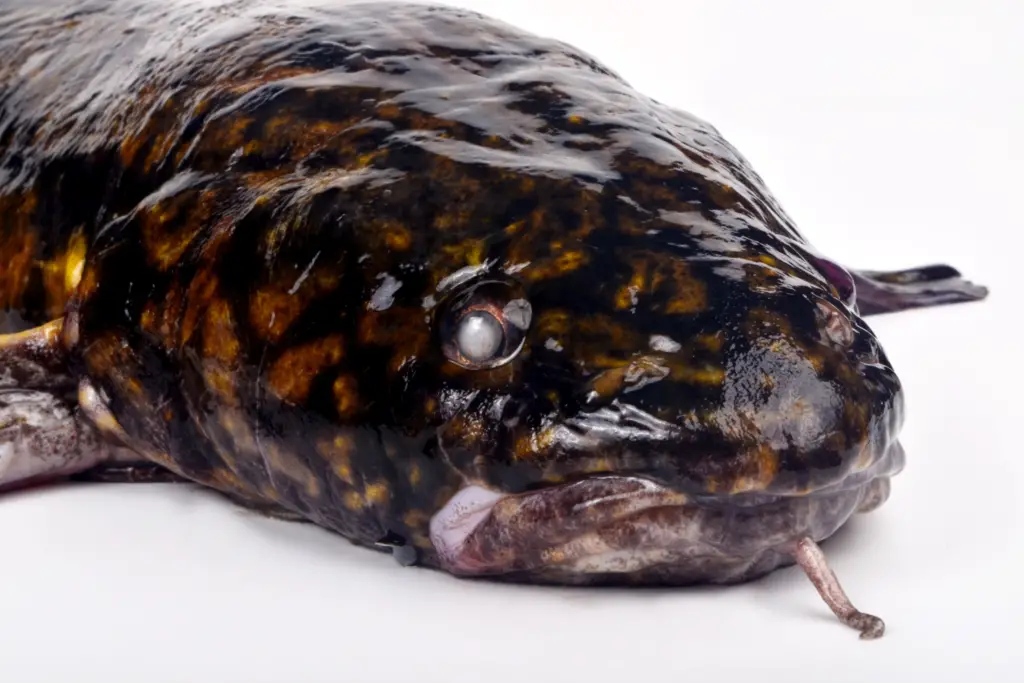On the latest episode of Outdoor Journal Radio, Ang and Pete discussed some news out of Minnesota, where Burbot have officially been given “Gamefish Status”.
The decision to make Burbot a gamefish officially occurred last winter when the fish was promoted from the lowly “Roughfish” pages to the prestigious “Gamefish” section of the 2021 Minnesota Fishing Regulations book.
What Does “Gamefish” Status Mean?

Although the debate between Gamefish and Roughfish may seem like semantics, the distinction does carry significant weight in the realm of fisheries management.
As avid carp anglers have come to understand, the deeming of a fish as “Game” or “Sport” allows governments to set stringent regulations for the species in question, from seasons to gear restrictions to harvest limits. Without this distinction, many fish deemed rough fish or non-game see all of these factors unregulated, resulting in open seasons, unlimited harvest, and little to no population monitoring.
In the case of this recent development in Minnesota, ice anglers heading into the 2022/23 season will not likely feel any effect, as the state has yet to officially announce any specific limits or restrictions. However, the nearby state of North Dakota, the only other location to give the Burbot the distinction, may set a precedent with their current daily limit of 10 and possession limit of 20.
The Case for the Burbot

Burbot (AKA. Ling, Pout, Lawyer, Cusk, Mariah) may not have the looks or reputation that will land them on the cover of any magazines, but the value of these fish goes far beyond their alien, eel-like appearance.
Here are a few reasons why we here at Fish’n Canada believe that the rest of North America should follow Minnesota’s lead.
Indicator Species:
Before getting into the value the Burbot has to the angler, we should first point out how important they are to our fisheries.
Joining a list alongside the likes of Mudpuppy and Salmon, the Burbot is classified by scientists as an “Indicator Species”.
The word indicator is often used to describe species that are capable of telling us about the health of an ecosystem. In the case of the Burbot, these highly sensitive species are often among the first to display symptoms of poor water quality and temperature changes, allowing scientists to discover contaminants such as PBCs before they reach detrimental levels to other, hardier species.
Edibility:
In addition to being a favourite of fisheries biologists, ice anglers all over the country are beginning to take note of the incredible quality of these fish as food.
As Outdoor Journal Radio producer, Dean Taylor, mentioned on the latest episode, Burbot are the only member of the cod family found in freshwater, making them perfect for your next fish fry.
Despite being a member of the cod family, the taste of Burbot has also conjured up other comparisons. As Ang alludes to during the show, the fish also has nicknames such as “Freshwater Lobster” and even “Freshwater Scallops”, depending on how it is prepared.
The incredible palatability of these fish is all the more reason to regulate it, as unlimited possession limits of one of the tastiest fish in freshwater seems like an awfully quick way to wipe them out.
Sport:

Finally, can a fish really be considered a “Sportfish” if it doesn’t provide at least some kind of enjoyment?
As Pete explained during the show, Burbot are excellent fighters and, unlike other species, are at their most aggressive under the ice. This is largely due to their mid-winter spawning window, which sees them flock to shallow banks and ledges right at nightfall for a “pregame” meal.
This behaviour also makes the Burbot the ultimate species to fill that often slow, midwinter period and can provide even the most seasoned ice angler with something new and exciting.
Our producer, Dean, has spent a lot of time doing exactly this when the season gets slow and says it has turned February into something he actually looks forward to. “The best thing about it,” says Dean, “is that you don’t have to go far. Many of your favourite Lake Trout and Walleye spots are also excellent Burbot habitat, you just have to wait for the sun to go down.”
What should Burbot regulations look like?
“If our ministries across the country, and in particular Ontario where I live, indeed do change the status of Burbot to a gamefish,” says Pete, “I’m hoping things start out concentrating more on creel limits, size limits, etc. and they still allow anglers to fish through the ice season. This could be a viable, economic sector of fishing and it’s quite possible that more people will partake as it gains in popularity.”
“If popularity grows and the numbers dwindle or ice anglers abuse the fishery during the winter, then further steps should be implemented. Until that time though, I personally feel that those “hard-core” enough to hit the ice in pure darkness, need to benefit with reward, which in this case is a hard-fighting, great-eating fish. As Ang and Reno coined a phrase so many years ago, “catch your limit but limit your catch”.”
What do you think about Minnesota’s decision? Let us know in the comments below if you think this change should occur in your state or province.







One Response
This is interesting – I did not know of a cod-related freshwater species; I did hear of Ling before, but they are salt water, east Atlantic fish that do rarely come up on a line here in Newfoundland and Labrador, and they are in the Pacific – had in in a restaurant in Victoria, BC once.
As with any species, careful management would be Highly desirable – species not managed often do get in trouble, endangered or worse!
I wonder if they are in any east coast fresh water bodies?